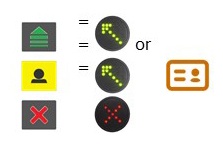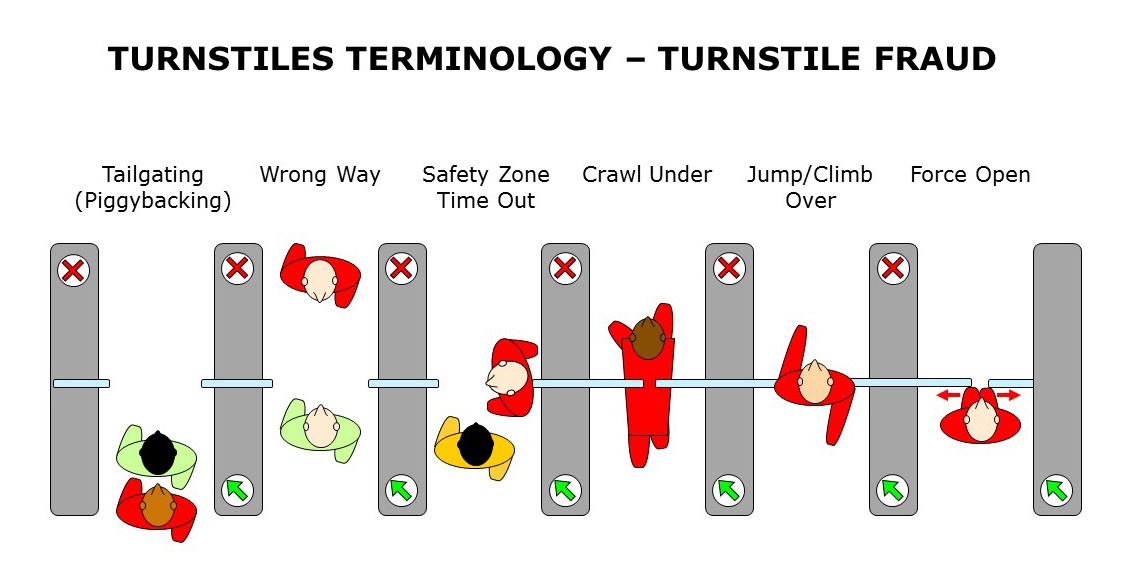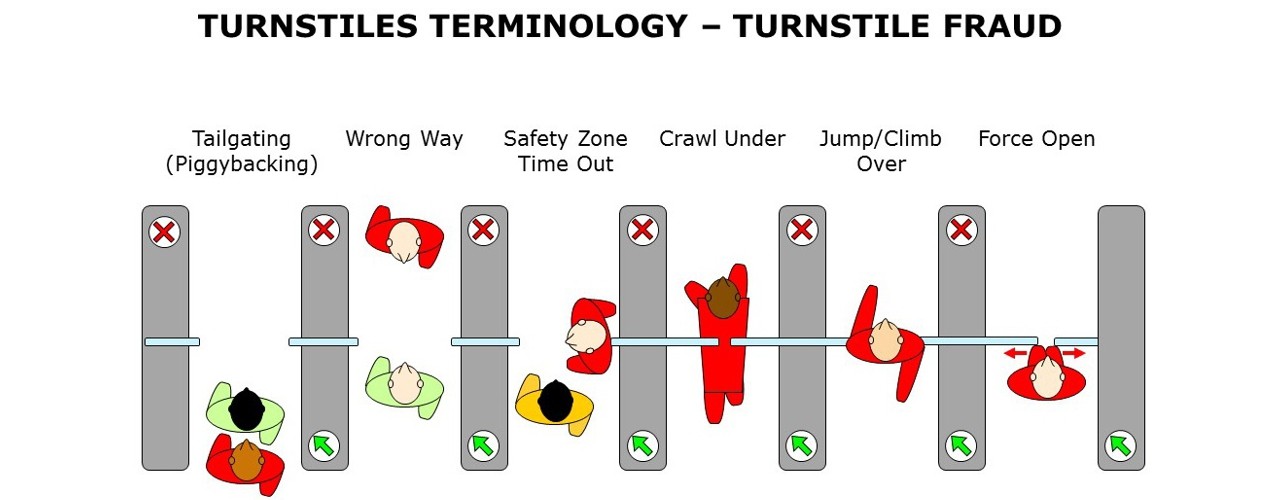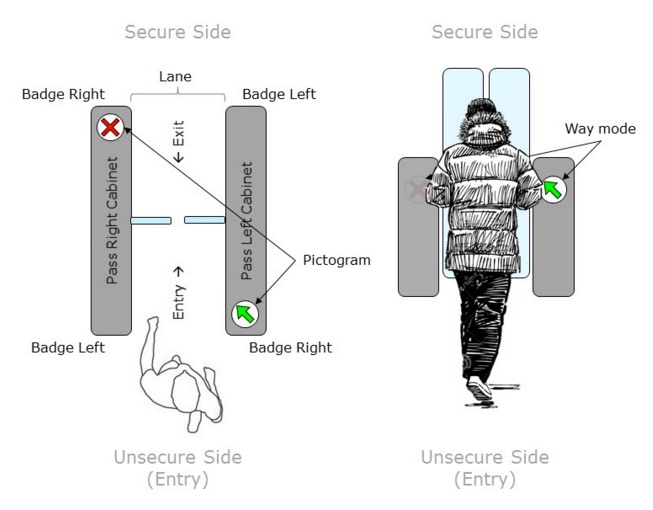Turnstiles Terminology - a Glossary of Terms
INTRODUCTION:
In this blog post we introduce some general terminology for Turnstiles. First of all, we give an explanation of the need for Turnstiles followed by a glossary of terms with illustrations.
What is a Turnstile?
A turnstile is a form of gate which allows one person to pass at a time. It can also be made as to enforce one-way traffic of people, and in addition, it can restrict passage only to people who insert a coin, a ticket or a card.
Why is there a need for Turnstiles?
Turnstiles control access to buildings, areas and specially secured zones. Turnstiles provide efficient entrance security for buildings and sites where there is a large flow of people. They regulate the flow of people coming into and out of an area and ensure that the movement of individuals remains fluid. The right security levels can be set by integration of entry authorisation using a card, ticket or token, to give control over who comes in and out. A high level of security can be maintained whilst allowing authorised people to move freely without delay.
Access Control and Entrance Security
In the field of physical security, Access Control is the selective restriction of access to a place or a resource. Entrance Security provides the selective restriction of access but specifically referring to access to and control over the movement of individuals to, from and around a site, building or room.
Let's take a look at the different elements of a Turnstile, using a Speed Gate as an example:
|
There are secure and unsecure sides to a turnstile. |
Lane
A lane is the space through which an individual passes to cross through the turnstile. A single lane is normally defined by two cabinets - Left and Right. A two lane turnstile would be defined by three cabinets - Left, Right and Centre.
Lane Mode
 Each Lane has a Mode which can be either
Each Lane has a Mode which can be either
- Free - that is anyone can pass
- Controlled - access is restricted to authorised people, or
- Locked - no access
Lane Modes are shown by "Way Mode" indicators.
Way Mode Indicators
LED Way mode indicators on the front of a turnstile denote the direction of passage and if passage is permitted.

Green Arrow (Steady)
The gate is authorised for use or designated free passage. The person can proceed through the gate.
Green Arrow (Flashing)
In the event of an emergency or fire, the green arrow flashes to indicate free passage or Fire Exit.

Red Cross (Steady)
The gate is in use or passage is not authorised.
Red Cross (Flashing)
A flashing red cross indicates a fraudulent condition such as tailgating, or a technical alarm.
Badge, badging
A badge is a credential used to gain access to some forms of turnstile. 'Badging' is the use of a badge. 'Badge right' suggests using the badge on the user's right hand side.
Pictograms
Pictograms, normally on the top of the turnstile cabinet, provide pictorial symbols providing instructions relating to badging.
Fail Safe
A fail safe is a device that in the event of a system failure or a power failure, the turnstile is designed to prevent or mitigate unsafe consequences. The turnstile fail safe keeps things safe in the event of failure.
Fail Sale Open
In the case of emergency or power failure, the gate releases to offer free passage. This can consist of release of mechanism, drop arm, or automatic opening.
Fail Safe Lock (Fail Secure)
In case of emergency or power failure, the gate remains in the locked, closed position.
Normally Open
In Normally Open mode (N/O), the turnstile provides an open walkway in rest position and will only close at unauthorised entry attempts.
Normally Closed
In Normally Closed mode (N/C), the turnstile provides a closed walkway which opens on acceptance of an authorised signal. On receiving the signal from the access control system, or push button, the gates open. If an unauthorised person tries to follow or attempts to enter from the opposite direction, the system detects the unauthorised passage and activates the in-built alarm system.
Bi-directional
Bi-directional turnstiles can function and allow movement in both directions.
Uni-directional
Uni-directional turnstiles operate in only one direction, only allowing movement in one direction.
Turnstile Fraud
Turnstile fraud is the deliberate or inadvertent overriding of a turnstile mechanism. For Turnstiles supplied by Gunnebo, fraud is detected through sophisticated and proven algorithms. Should a fraudulent passage be detected, an audible alarm can be generated. In addition, a remote output is also available, and depending on circumstances the passageway will close or not open.
There are several different types of turnstile fraud:
 |
Piggybacking and Tailgating
The term 'Piggybacking' refers to when a person tags along with another person who is authorised to gain entry into a restricted area or pass a certain checkpoint.
The term 'Tailgating' describes the act of an unauthorised person who follows someone to a restricted area without the consent of the authorised person.
'Tailgating' implies without consent, while 'piggybacking' usually implies consent of an authorised person.
Wrong Way
When a person enters the gate in the wrong direction or from one direction when the gate is being used in another direction.
Safety Zone Time Out
The gate is able to detect when a person has not left the safety zone.
Crawl Under, Jump/Climb over, Force Open
Sophisticated sensors can detect attempts to crawl under or jump or climb over the turnstile, or to force open the gate.
Source : http://blog.speedstiles.com/blog/glossary-of-turnstiles-terminology




Comments
comments powered by Disqus